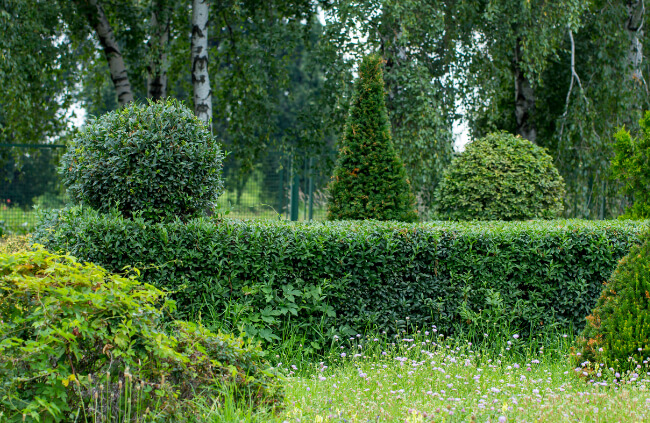In Australia, the privet plant has been on the noxious weed list for quite some time and is unavailable to buy from nurseries. The reason: it grows too well in our conditions and can grow so easily from seed that it is taking over our native Australian plants and killing them.
More...
Introducing the Privet Plant
Each privet plant produces thousands of blue-black berries that are irresistible to birds. They carry them off and wherever the seed falls it will most likely germinate. As the privet is a dense forming plant, the reason we grow them as a hedge, they will block out the sunlight from other plants and eventually smother them.

If you have inherited a privet hedge or you had one growing prior to the privet being registered as a noxious weed the responsible action to take would be to ensure that they are pruned prior to setting seed.
If you are hedging your privet already this shouldn’t be an onerous task merely part of your current hedge maintenance.
Ligustrum Varieties
If you want to grow a privet hedge in Australia the species you need to grow is Ligustrum undulatum. This variety doesn’t grow berries and is not invasive. For those who don’t live in countries where privets are outlawed read on for how to successfully grow and prune privets as a hedge.
The privet, Ligustrum, is a native of China and comes in a few varieties. The two most popular types are the small-leaved privet, Ligustrum sinense, and the large-leafed privet, Ligustrum lucidum. They both produce spring-flowers that are widely known for causing grief for hayfever sufferers.
How to Plant a Privet Hedge
To plant a privet hedge select at least year-old stock and space them about 30cm (12in) apart and at least 45cm (18in) away from a boundary. The best time to plant your privets would be in the spring and this is also a good time to fertilise using a good slow-release fertiliser (sheep manure is ideal).
You shouldn’t need to mulch the soil as the hedge when it’s grown but as it begins to grow this may be helpful for water retention and suppression of weeds.

How to Prune a Privet Hedge
The start of spring is also the ideal time for pruning your hedge. The ideal site to look at in terms of pruning is Purdue University’s Department of Horticulture, which gives a 6 year pruning diagram for hedges.
Each year your privet hedge will require pruning after the initial shaping and this can be done easily with a hedge trimmer or pair of pruning shears.
Published on June 5, 2023 by AGT
Last Updated on February 8, 2024




